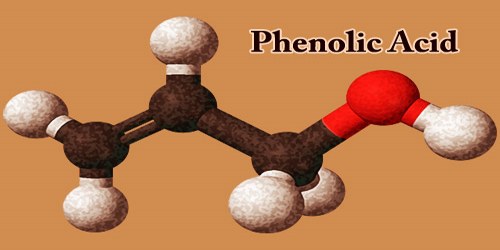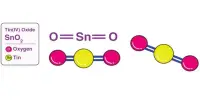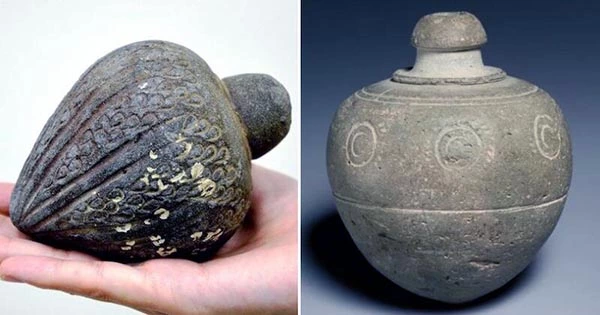Phenolic acids or phenol carboxylic acids are aromatic acids that contain a phenolic ring and a carboxyl functional group. Included in that class are substances containing a phenolic ring and an organic carboxylic acid function (C6-C1 skeleton).
Phenolic acid is a large family of natural compounds that are widely distributed in plants, with properties that are very important and useful for both plant producers and human health. Phenolic acid compounds get more attention in recent years because of their effects on human health. As a polyphenol, phenolic acid is a very strong antioxidant and has antibacterial activity, antivirus, anti-inflammatory, and anticancer.
Two important naturally occurring types of phenolic acids are hydroxybenzoic acids and hydroxycinnamic acids, which are derived from non-phenolic molecules of benzoic and cinnamic acid, respectively.
Flavonoids and phenolic acids constitute one of the most widespread groups of plant phenolics. Because of their significance in plants and human health, a deeper understanding of flavonoid concentration and biological activities may suggest their potential as therapeutic agents, as well as predicting and monitoring the quality of medicinal herbs, would be useful.
Phenolic acid is a compound composed of phenols and carboxylic acids. Phenolic acid can be in the form of compounds C6-C3, C6-C2, and C6-C1. C6-C3 phenolic acid is derived from a hydroxycinnamic acid and C6-C1 is derived from hydroxybenzoate. Although the basic framework remains the same, phenolic acids differ in the number and position of hydroxyl groups on the aromatic ring.
Some examples of phenolic acids are listed below.
- Protocatechuic acid (PCA)
- p-hydroxybenzoic acid (PHBA)
- Vanillic acid
- Caffeic acid
- p-Coumaric acid
- Ferulic acid
- Syringic acid
- Sinapinic acid
Phenolic acids can be found in many plant species. Their content in dried fruits can be high. Natural phenols in horse grams (Macrotyloma uniflorum) are mostly phenolic acids, namely 3,4-dihydroxy benzoic, p-hydroxy benzoic, vanillic, caffeic, p-coumaric, ferulic, syringic, and sinapinic acids. Phenolic acids can be found in mushroom Basidiomycetes species. It is also a part of the humic substances, which are the major organic constituents of soil humus. Many phenolic acids can be found in human urine.
Phenolic acid is isolated in three methods, namely acid hydrolysis (HA), base hydrolysis (HB), and without hydrolysis (TH). Acid hydrolysis is carried out using 2 N H2SO4 by heating for 2 hours at 600C. Base hydrolysis is carried out using 1 N NaOH in a dark room for 24 hours. After the hydrolysis process is completed, the three fractions are then extracted using ether and anhydrous Na2SO4. The extraction results are then dried and dissolved in methanol. The standard phenolic acids used are gallic acid, salicylic acid, caffeic acid, ferulic acid, and pyrogallol. The isolation results of phenolic acids from acid hydrolysis fraction (HA), base hydrolysis (HB), and without hydrolysis (TH) were 0.77g; 0.93g; 0.78g.
Phenolic acids are the most abundant in cereals, and flavonoids also exist in grains. The total phenolic and flavonoid content of 20 genotypes of small grain cereals, including bread wheat, durum wheat, rye, hull-less barley, and hull-less-oat, was analyzed. These phytochemicals had the highest content in hull-less barley followed by hull-less oat, rye, durum wheat, and bread wheat. Phenolic compounds are among the phytochemicals present in cereals which promote health. Despite their antioxidant properties, phenolic compounds are receiving a lot of attention. The most common types of phenolic compounds found in whole grains are the phenolic acids and flavonoids. The role of gut microbiota in the biotransformation of phytochemicals, including phenolic acids, is widely accepted, causing the formation in the circulation of food-derived metabolites and excreted in the urine.
Information Sources:
















